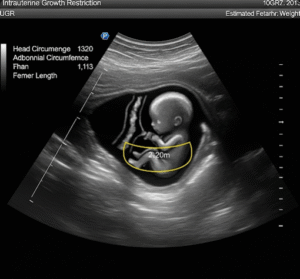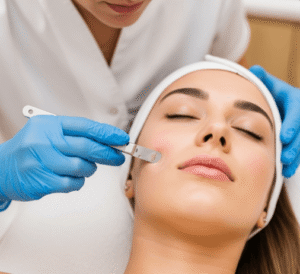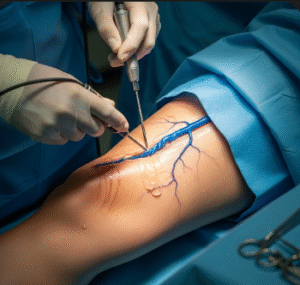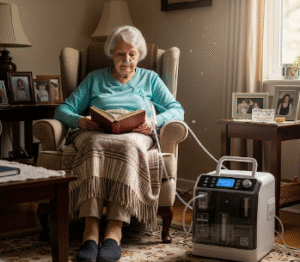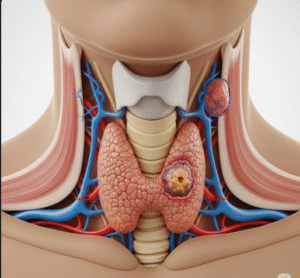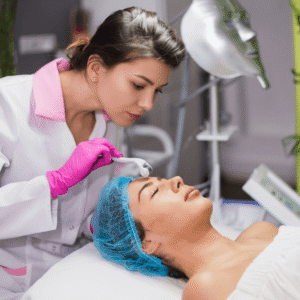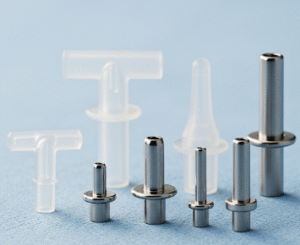What It Is
Shoulder feminization is a surgical procedure that reduces the width and angular appearance of the shoulders to create a more delicate, traditionally feminine silhouette. This is often achieved by clavicle (collarbone) shortening surgery, where a portion of the clavicle bone is removed, and the ends are fixed with plates or screws.
By narrowing the shoulders, the surgery enhances waist-to-shoulder proportions and softens the upper body contour. It is most commonly chosen by transgender women, non-binary individuals, or cisgender women seeking a more feminine body frame.
Why It’s Done
Patients choose shoulder feminization because:
- They want a narrower, softer, and more feminine upper body shape.
- Broad shoulders make the torso look more masculine or disproportionate.
- It enhances overall feminization procedures, such as breast augmentation or facial feminization.
- They desire improved self-confidence in clothing such as dresses, tank tops, and swimsuits.
Good candidates include:
- Transgender women and non-binary patients seeking gender-affirming body contouring.
- Women with naturally broad shoulders desiring a softer silhouette.
- Healthy patients at a stable weight with realistic expectations.
Alternatives
- Non-surgical feminization: Clothing choices and posture training can create the illusion of narrower shoulders.
- Hormone therapy (HRT): May change fat distribution but does not reduce bone width.
- Other feminization surgeries: Facial feminization, breast augmentation, or hip fat grafting may be combined for comprehensive results.
Preparation
Before undergoing shoulder feminization in Korea, patients will:
- Have a consultation including physical examination and X-rays to measure clavicle length.
- Undergo medical testing (bloodwork, imaging, ECG if needed).
- Stop smoking and alcohol for at least 4 weeks before surgery.
- Discontinue blood-thinning medications and supplements.
- Plan for 2–3 weeks of downtime with limited arm movement during early recovery.
How It’s Done
- Anesthesia: Performed under general anesthesia.
- Incision: A small incision is made over the clavicle.
- Bone shortening: A segment of the clavicle (usually 2–4 cm) is removed.
- Fixation: The bone ends are stabilized with titanium plates and screws.
- Closure: The incision is closed with sutures, and dressings are applied.
- Duration: 2–3 hours, usually requiring one overnight hospital stay.
Recovery
- First 2 weeks: Swelling, bruising, and discomfort around the shoulders are common. Arm movement may be limited.
- Support garment: Sometimes a sling or supportive band is used temporarily.
- Return to work: Most patients resume light duties within 2–3 weeks.
- Exercise: Heavy lifting and strenuous activity should be avoided for 6–8 weeks.
- Results: Visible immediately, with final refinement after 3–6 months as swelling resolves.
Possible Complications
- Temporary stiffness, numbness, or tingling in the shoulders.
- Scarring over the clavicle area.
- Rare risks: infection, delayed bone healing, implant irritation, or asymmetry.
Treatment Options in Korea
Diagnosis
Korean surgeons use physical examination and clavicle X-rays or 3D imaging to determine safe reduction length and design a personalized surgical plan.
Medical Treatments
Non-surgical options such as hormone therapy, physiotherapy, or posture correction may complement feminization but cannot reduce bone width.
Surgical or Advanced Therapies
- Clavicle shortening surgery (standard shoulder feminization).
- Combination with other feminization surgeries such as breast augmentation, hip fat grafting, or facial feminization for full-body harmony.
- Advanced techniques in Korea focus on minimal scarring and precise bone fixation for natural, safe results.
Rehabilitation and Support
- Regular follow-up appointments with X-rays to confirm bone healing.
- Scar management with silicone gels, laser, or microneedling if needed.
- Physiotherapy to restore full shoulder mobility.
- Multilingual post-op support and recovery programs for international patients.



